Photo: Front row Abd ul-Rahman Lomax (L) and Charles Beaudette (R) author of Excess Heat: Why Cold Fusion Prevailed.
My apologies for no write-up of yesterday’s events. So much going on here in Columbia! I went to the tour of the Sidney Kimmel Institute for Nuclear Renaissance, and got back late, missing some key lectures (though the tour was tremendous).

The last part of the demo didn’t happen, as it was 1AM in Milan, and the Defkalion team was beat from flying from Vancouver, practically staying awake for two days, relayed Michael Melich, so he just announced the communique from Defkalion about the input of somewhere around 1.9 kilowatts, the output roughly 5.2 kilowatts, giving a COP somewhere around 2.5.
Good numbers, though the demo itself was somewhat anti-climactic, due to the time-shifts, late arrival of ICCF to watch, etc. I didn’t notice alot of discussion from scientists here about the demo, though I’m sure opinions were expressed in private.
For the most part, scientists in the CMNS community are not impressed by video, they want data. They want to be able to go and make measurements of key quantities, and only then will they accept any claim, not just from Defkalion, but any entity engaged in product development.
Nevertheless, the feeling was hopeful that all of these commercial ventures would be successful, as success for one, means success for the community. All will benefit when this technology is finally born unto the world.
Industry is here, looking around, and trying to catch up on the latest developments. Several participants in the conference are here at the behest of their employer tasked with writing reports on the field in order to determine whether or not they should get into the area.
Back to the Lectures
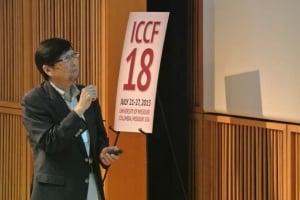 Wednesday morning started with Jirohta Kasagi who presented research on low-energy deuteron beam experiments.
Wednesday morning started with Jirohta Kasagi who presented research on low-energy deuteron beam experiments.
He talked about electron screening and the effect that allows deuterium atoms to get closer together.
 ICCF-18 host University of Missouri scientist Peter Pfeifer is working from a Department of Energy grant on hydrogen storage in materials, currently using carbon nanotubes. Pfeifer is also associated with the Sidney Kimmel Institute of Nuclear Renaissance (SKINR). He showed data that boron-doped carbon film increases the density of adsorbed hydrogen.
ICCF-18 host University of Missouri scientist Peter Pfeifer is working from a Department of Energy grant on hydrogen storage in materials, currently using carbon nanotubes. Pfeifer is also associated with the Sidney Kimmel Institute of Nuclear Renaissance (SKINR). He showed data that boron-doped carbon film increases the density of adsorbed hydrogen.
They haven’t seen any excess heat from these high-surface-area carbon films during adsorption, but they are just beginning to experiment. They are also now loading hydrogen into palladium, showing data of 80% loading. They will continue to load the “SKINR palladium” beyond this and they expect to see anomalous heat generated at those levels.
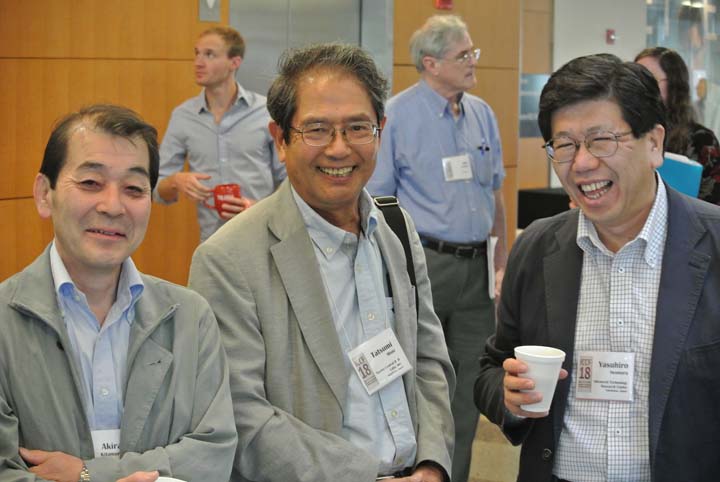
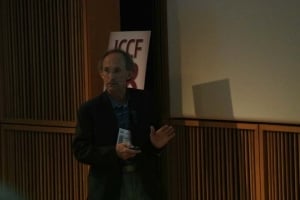 The ENEA Workshop featured several researchers highlighting the current work by the Italian agency. Research programs at ENEA have international collaborations sponsorship from ENEA, the University of Missouri, the Naval Research Lab, and SRI International.
The ENEA Workshop featured several researchers highlighting the current work by the Italian agency. Research programs at ENEA have international collaborations sponsorship from ENEA, the University of Missouri, the Naval Research Lab, and SRI International.
Vittorio Violante gave an overview of research that has continued for over two-decades, and which has cooperated with the agencies in the U.S. for sixteen years. He is an expert in the materials science of palladium, and at one time, was “the only man in the world who could make palladium that worked”, according to Michael McKubre, who also presented during the two-hour workshop.
Electrochemical cells using palladium-deuterium elements are claimed to be clearly generating excess heat beyond chemical origin. The palladium needs loading in excess of 80% to produce excess heat.
Contaminants can affect the grain size and the grain boundary, which control stress and mass transfer in the material. Contaminants also can affect crystal orientation and surface morphology, which control kinetics and DL capacitance.
Samples that showed excess heat were revealed to have specific surface morphologies. Doping the palladium with platinum creates a much more varied surface, and these samples produced 50% excess power. Rhodium-doped palladium gave fast, high loading, and gave heat 50% excess over chemical reactions.
Main features associated with the excess heat effect are identified as:
1. loading threshold
2. loading dynamics,
3. grain boundary size,
4. surface morphology
5. crystal orientation (PD)
A specific role of some contaminants has also been identified.
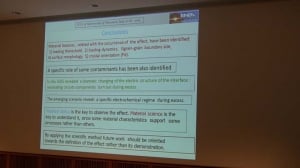 In short, for these Pd-D systems, materials science is the key to understand this reaction. The probability to succeed is directly proportional to the ability to produce the right material that will host the reaction.
In short, for these Pd-D systems, materials science is the key to understand this reaction. The probability to succeed is directly proportional to the ability to produce the right material that will host the reaction.
Violante stressed that demonstrating the reality of this reaction has been done, and attention must now focus on defining the reaction itself – and this effort must involve young people!
Violante’s work at ENEA was sponsored in part by National Instruments.
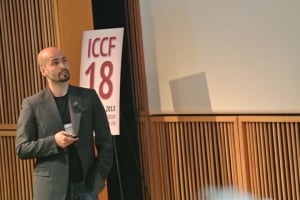 The Workshop continued with Emanuele Castagna discussing ENEA’s gas diffusion experiments using multi-layer membrane electrodes. Analysis of the membrane’s surface continued to focus on the importance of materials.
The Workshop continued with Emanuele Castagna discussing ENEA’s gas diffusion experiments using multi-layer membrane electrodes. Analysis of the membrane’s surface continued to focus on the importance of materials.
ENEA is also doing electrochemical deposition techniques, work sponsored in part by the Italian Ministry of Foreign Affairs.
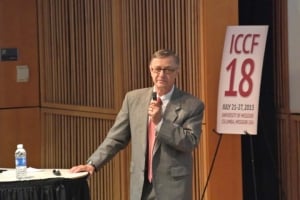 Director of SKINR Graham Hubler continued the ENEA Workshop by talking about how to prepare cathodes. Hubler recently retired from the NRL, and palladium metallurgy was a focus when Hubler was there. He asked if impurities could have been responsible for the Fleischmann-Pons Effect (FPE).
Director of SKINR Graham Hubler continued the ENEA Workshop by talking about how to prepare cathodes. Hubler recently retired from the NRL, and palladium metallurgy was a focus when Hubler was there. He asked if impurities could have been responsible for the Fleischmann-Pons Effect (FPE).
Older lots of palladium that appeared to produce substantial heat, likely had only ONE source – Engelhard, and these samples have different impurity profiles than current palladium lots. Older lots appear to have recycled Pd from catalytic converters as rhodium and platinum are present.
Current lots are much purer in these elements, but have zirconium, yttrium, and hafnium present.
The NRL made their own alloys for a while, and Hubler says that SKINR will now start making their own alloys. Systematic studies of samples that produce excess heat and do not produce heat need to be undertaken to determine differences.
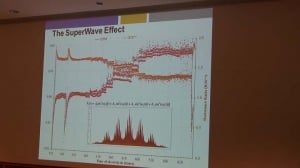 Michael McKubre continued by discussing some of the criteria for working with palladium-deuterium systems.
Michael McKubre continued by discussing some of the criteria for working with palladium-deuterium systems.
Flux is a huge component in generating excess heat. Initial loading of deuterium appears to respond to continued flux. However, high flux negates high loading in conventional electrochemistry. Yet the problem was solved by Irving Dardik‘s Superwave concept, and loading above 90% can be achieved accompanied by flux.
McKubre is now going back to earlier data to understand this “looping effect.” These systems are not DC (direct current), but they are coupled oscillators that “breathe”.
However, there are “an awful lot of things” that need to be controlled in these electrochemical systems, and much science to be done to learn how to do that.
 Robert Duncan closed the ENEA Workshop by noting the valuable international cooperation on this topic, and the intellectual basis that is forming.
Robert Duncan closed the ENEA Workshop by noting the valuable international cooperation on this topic, and the intellectual basis that is forming.
He speculated on three classes of experiments:
i) cmns and nuclear science is well understood, and investors should be glad to invest in these;
ii) fracto-fusion, and phenomenon like this are more complex;
iii) the excess heat effect is not well-understood at all.
Nuclear physics cannot ignore the condensed matter around it, as is stated in textbooks, when the particles are not in a vacuum; the Mossbauer Effect shows this. A hyperfine interaction is another example.
In strongly interactive systems driven far from equilibrium, there is no conformity to statistically normal modes. New effects from lightning in thunderstorms interests Duncan as an example of this.
Shifting to sociological aspects of this science, Duncan is impressed with the leadership in Europe and India who are now moving to support research.
He mentioned that Thomas Jefferson was big into exploration of the unknown, and he started the University of Virginia to do just that. Duncan sees the University of Missouri as established in that same vain.
Duncan made a special point to thank ENEA for their cooperation and outstanding program in materials science that is advancing the understanding of CMNS.
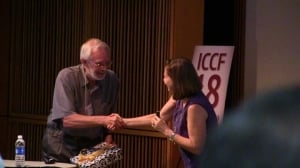 At that point Edmund Storms received a gift for his achievements, part of the Distinguished Science Award he received yesterday.
At that point Edmund Storms received a gift for his achievements, part of the Distinguished Science Award he received yesterday.
He was called up to the podium somewhat abruptly as he was leaving the auditorium, and startled, he muttered “Uh oh, what did I do now?” However, it was a lovely box with a bow that he got.
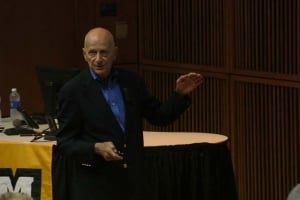 After lunch, David J. Nagel speculated on a method to link reaction rates to transmutation products in order to support his analysis on whether or not LENR could effectively get rid of nuclear waste by transmutation, at the current level of development. He went through and listed some published experimental the theoretical reaction rates.
After lunch, David J. Nagel speculated on a method to link reaction rates to transmutation products in order to support his analysis on whether or not LENR could effectively get rid of nuclear waste by transmutation, at the current level of development. He went through and listed some published experimental the theoretical reaction rates.
Here’s a selection of his slides:
His message: remediating dangerous radioactive waste to a benign material is one of the possible applications of LENT. To do this effectively, there needs to be much higher rates of transmutation than the maximum of what is reported now.
Thomas Barnard 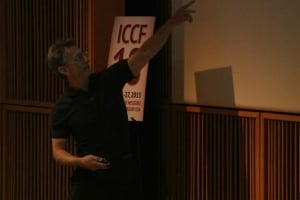 of Coolescence talked about the High Energy D2 Bond from Feynmann’s Integral Wave Equation.
of Coolescence talked about the High Energy D2 Bond from Feynmann’s Integral Wave Equation.
He seemed to consider a different configuration of the electron bonded in molecular deuterium, a geometry that allows Coulomb barrier penetration, and the Three Miracles.
This was pretty much over my head, so forgive me if I skip that description.
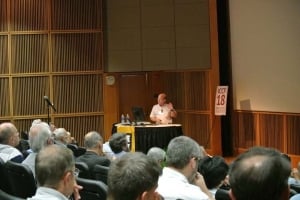 Simulation of the nuclear Transmutation Effects in LENR was the subject of Norman Cook‘s presentation. Cook indicated that the nucleus of an atom has a lattice-like substructure. Apparently, Andrea Rossi is familiar with Cook’s work saying, “My work has gone well thanks to your book” referring to Models of the Atomic Nucleus. Rossi has his lab personnel read that book, too, says Cook.
Simulation of the nuclear Transmutation Effects in LENR was the subject of Norman Cook‘s presentation. Cook indicated that the nucleus of an atom has a lattice-like substructure. Apparently, Andrea Rossi is familiar with Cook’s work saying, “My work has gone well thanks to your book” referring to Models of the Atomic Nucleus. Rossi has his lab personnel read that book, too, says Cook.
Moving to transmutations, he looked at the finite number of hot spots on a cathode surface, and assumed that there was less palladium after the reaction, than before. Then, he showed Tadahiko Mizuno‘s data showing both positive and negative changes in palladium isotopes near those hotspots. Cook was able to simulate that strange data, suggesting that all isotopes of palladium are involved in the reaction.
Doing the same thing for Mizuno’s nickel data, it was found that Nickel 61 does not change in the depletion analysis, indicating the Mizuno and Defkalion’s mono-isotopic experiments are related.
Cook concludes saying don’t just look at depletion of isotopes, but look at the addition of isotopes, too.
 Peter Hagelstein was up next with his talk Lattice-Induced Nuclear Excitation and Coherent Energy Exchange in the Karabut Experiment.
Peter Hagelstein was up next with his talk Lattice-Induced Nuclear Excitation and Coherent Energy Exchange in the Karabut Experiment.
He started out saying, “I’ve had some luck lately, and I’d like to share that with you”, and boy was he beaming.
Hagelstein asks, “Can we up convert from vibrations to nuclear excitation?” To begin to answer, minimize the energy transferred (easier to transfer smaller amounts) and start from a stable nuclear ground state.
He tested this idea using a TeraHertz vibrational source and hit Mercury Hg201 with a directional beam.
Hagelstein remembered that Alexander Karabut showed up at ICCF10 reporting collimated x-rays from his cell experiments. Hagelstein sees diffuse emissions, dependent on voltage, from Karabut’s experiments, as well as collimated beam, associated with super-radiant emission dynamics.
He sees this experimental as an example of vibrational energy converting to nuclear energy. He’s struggled to model this particular experiment since 2012, and after several failures, feels confident he has a model that will work for all the reactions from different systems, and has successfully validated the idea on Karabut’s data.
.
Here it is — Tah Dah!
I believe he said that he could take this new model, and derive his old lossy spin model from it (got to check that).
With this model, he can solve the constraints, and obtain self-consistent solutions. More importantly, there is agreement between maximum observed x-ray energy and maximum from model.
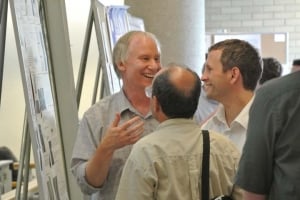 Hagelstein was clearly pleased with the achievement, after 300 previous theoretical attempts “buried in my backyard”, and it was nice to see him smiling. Who wouldn’t be happy, after all this time?
Hagelstein was clearly pleased with the achievement, after 300 previous theoretical attempts “buried in my backyard”, and it was nice to see him smiling. Who wouldn’t be happy, after all this time?
He handed the remainder of his time to Vladimir Vysotskii, whose poster upstairs at the conference discussed collimated x-rays, and gave Hagelstein some confirmation that this model was useful for these experiments.
Still, there remains work to do as he tests it, one-by-one for the plethora of cold fusion effects.
A break ensued, and I was able to interview Michael McKubre, Jed Rothwell, and David French.
 Back in the auditorium at 6PM, Roger Stringham presented his talk on Conservation of Energy and Momentum, a Cavitation Heat Event.
Back in the auditorium at 6PM, Roger Stringham presented his talk on Conservation of Energy and Momentum, a Cavitation Heat Event.
He uses Megahertz frequencies to create a million cavitation bubbles per cycle, which then collapse, shooting jets that hit palladium foil, creating high heat events.
Experimental extrapolated SEM ejecta site survey count at a 1.6 MHz produces 1013 ejecta/second at mc2 gives 60 +/-50 Qx watts.
Calculation of 107 mc2 events per one MHz cycle is 1013 events per second equals 38 Qx watts.
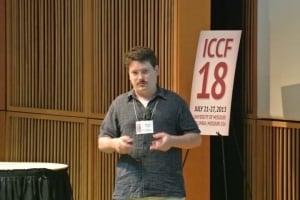 6:30PM was the last talk for the day, and it featured local SKINR post-doc stepping in for John Gaul to present Cross Section Measurements of Deuteron-induced Reactions. This is research involving accelerated deuterons towards a target of multi-layer foils, often titanium and palladium.
6:30PM was the last talk for the day, and it featured local SKINR post-doc stepping in for John Gaul to present Cross Section Measurements of Deuteron-induced Reactions. This is research involving accelerated deuterons towards a target of multi-layer foils, often titanium and palladium.
This seems closer to hot fusion than cold fusion, but perhaps the data would be useful to the CMNS crew.
The long day of science ended; my brain full, and my mind spinning.

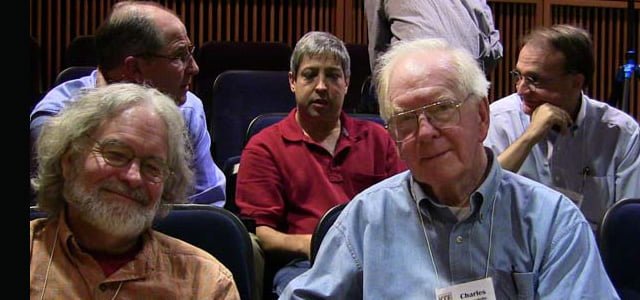
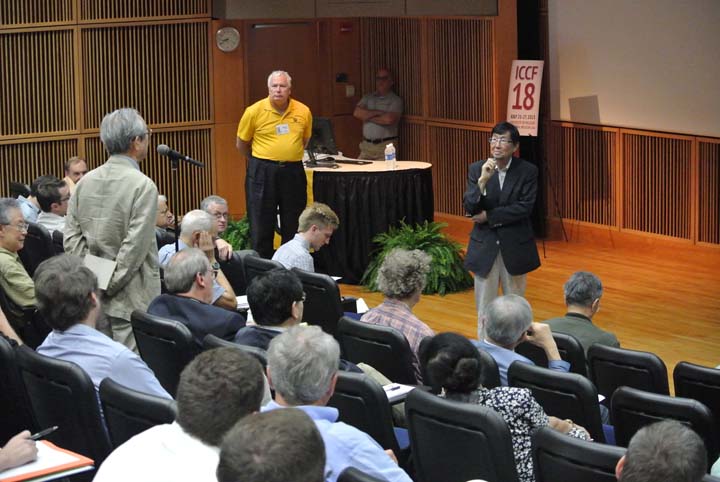

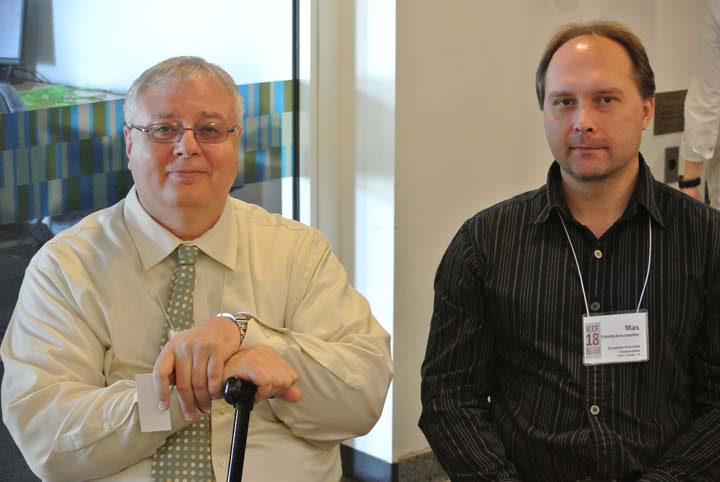


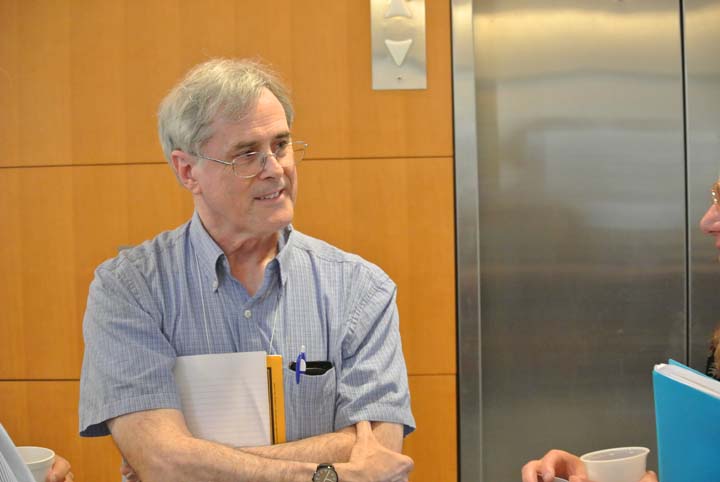


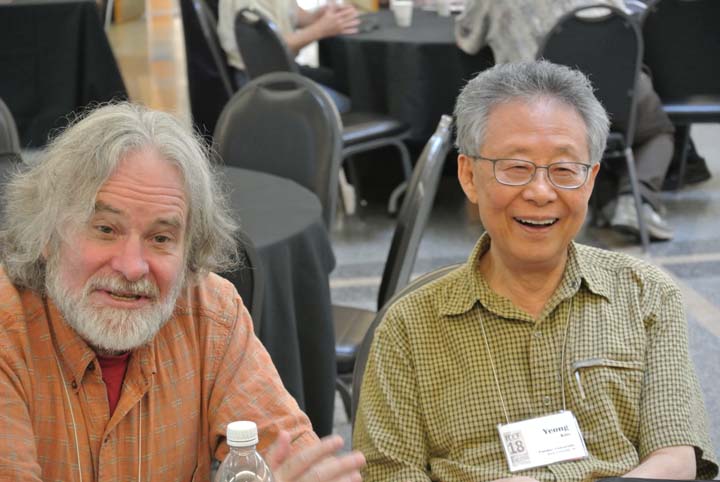


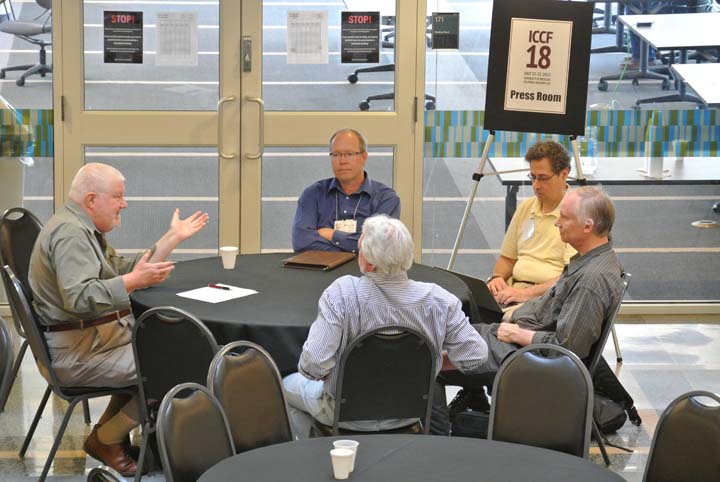
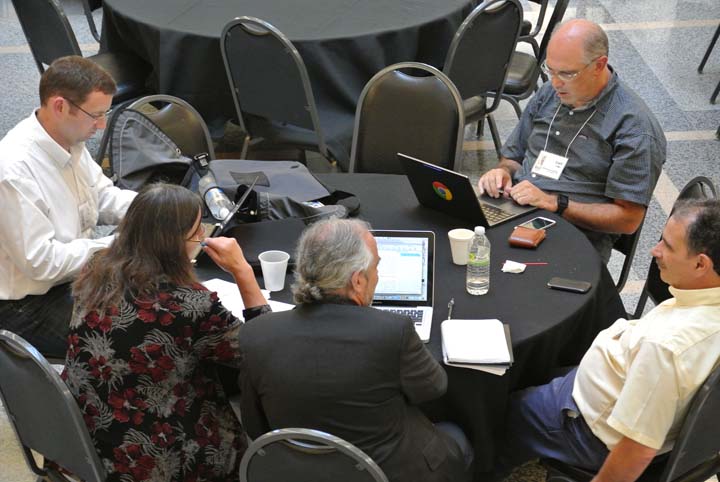
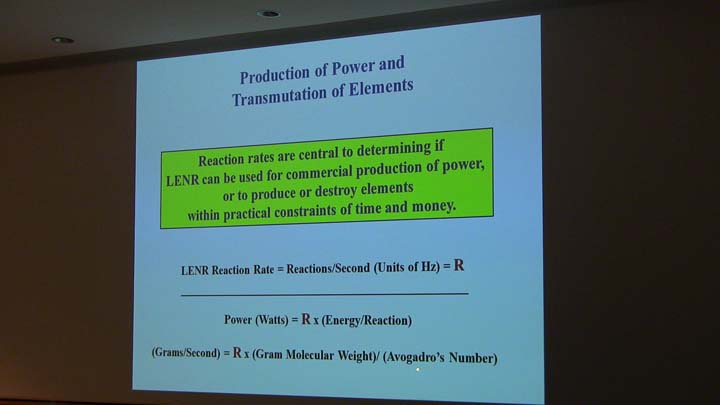

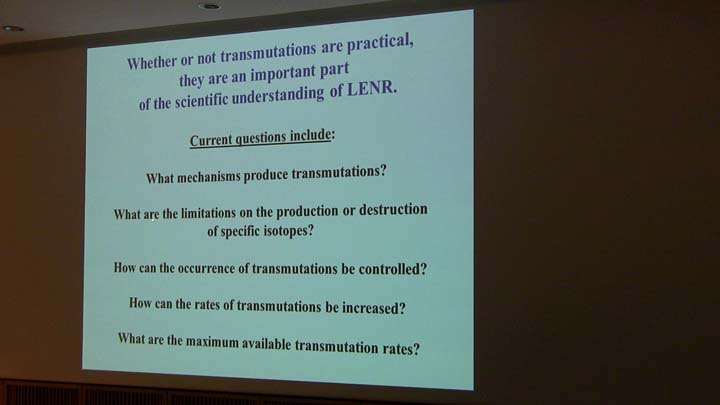
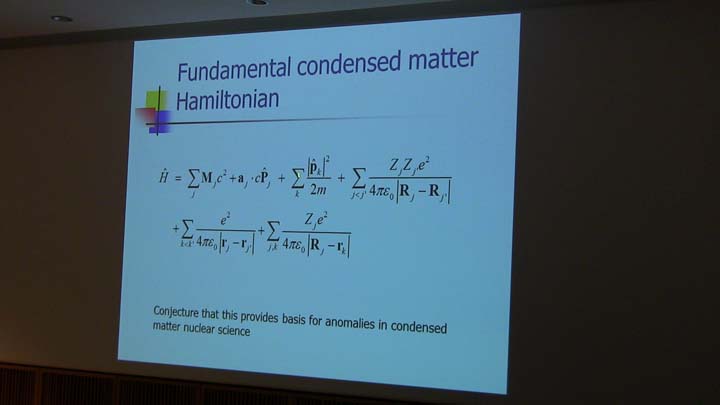
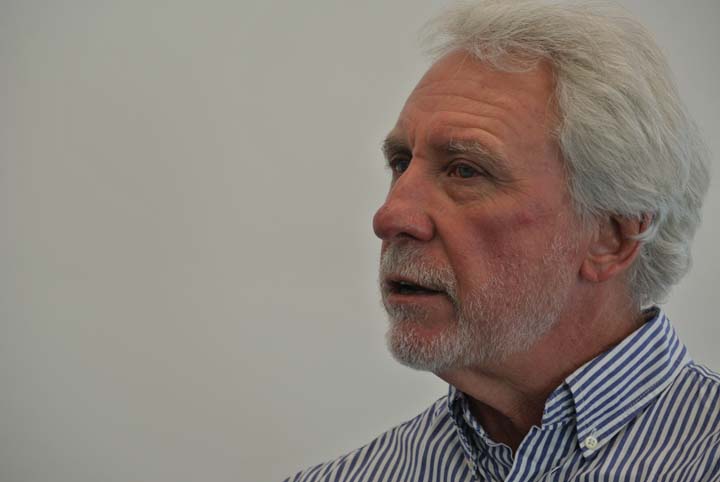

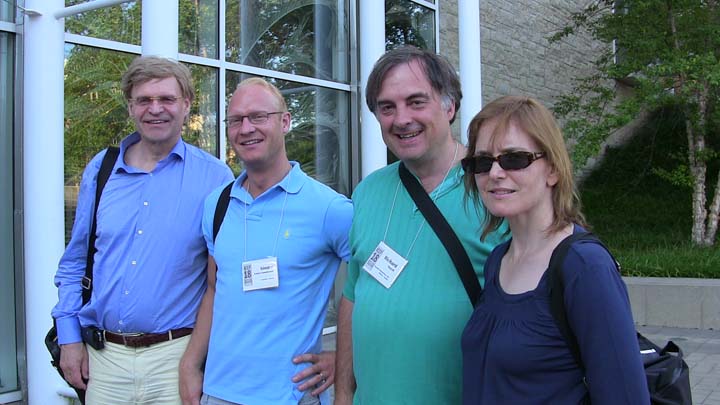
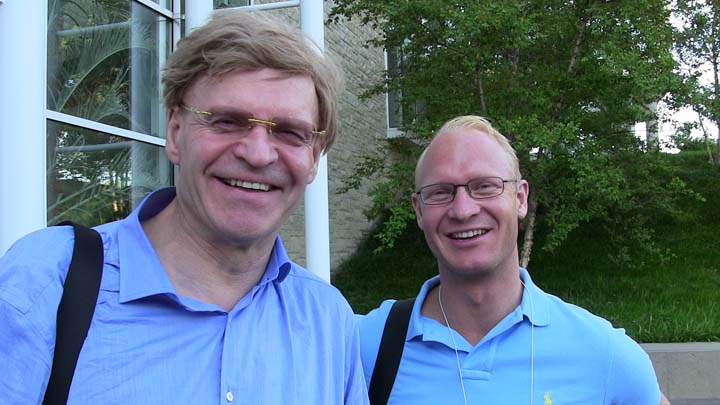
Great job Ruby! Hopefully when the first LENR generators hit the market this year these scientists will find themselves in the lead of the predictable gold rush that will ensue. Few people can imagine the circus when the herd wakes up to the legitimacy of LENR.
Wonderful, Ruby you should apply for the editorship of one of the premier science comics (Nature, Science etc.) and then maybe the World would know some more of the many things that are hidden even from scientists.
Prof Peter Hagelstein’s dogged tenacity is a credit to his name. It is not as though he is doing it to get rich or to earn the pundits of his peers. History must draw a veil over the un-scientific nastyness of the last 35 years. But let us not forget the power of the left hemisphere to decieve us with an elegant but incomplete model of reality.
If you are reading this Prof. Hagelstein. I thank you. Perhaps you are unaware of the importance of your work.
You too are doing a stirling job of reportage Ruby. Thank you.
Many heroes at ICCF there is.
Thanks for the great reporting from all of us who wish we could attend.
Dr. McKubre’s presentation on the importance of flux and the superwave seems to give credence to the Brillouin approach to activation/stimulation.
Thanks very much for your comprehensive overview of the conference Ruby! And for the many audio/video interviews with these intrepid scientists. It appears that vindication for these stalwart researchers is well within reach. Congratulations to Dr. Duncan, U Mizzou, and SKINR for putting on an excellent event. It is inspiring to see integrity in science again.
Any chance we can hear or read Dr. Kim’s talk on BECNF in Ni-H2 experiments??